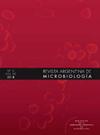Streptococcus spp. isolated from bovine mastitis: Antimicrobial sensitivity studies and disagreement evaluation between routine phenotypic diagnosis and molecular identification
IF 2.1
4区 生物学
Q4 MICROBIOLOGY
引用次数: 0
Abstract
Bovine mastitis poses a significant threat to global dairy production, resulting in substantial losses in milk production. Streptococcus bacteria, particularly Streptococcus uberis, Streptococcus agalactiae, and Streptococcus dysgalactiae, are commonly implicated in this condition. An accurate diagnosis is crucial for implementing effective treatment and minimizing its impact on production. This study examined 115 Streptococcus strains isolated from bovine mastitis cases in Uruguay using PCR for species identification. Additionally, the resistance to tetracycline, erythromycin, and penicillin was assessed in 81 of the bacterial strains under study. Significant disparities between phenotypic and genotypic detection were evident across all three species, with only 31% of strains identified phenotypically aligning with PCR results. Phenotypic prevalence indicated S. dysgalactiae as the most prevalent (44.35%), followed by S. uberis (24.34%) and S. agalactiae (6.09%). However, the genotypic identification revealed S. uberis as the most prevalent, followed by S. dysgalactiae, while S. agalactiae remained the least prevalent. The high sensitivity and speed of PCR suggest its potential routine implementation for diagnosing bovine mastitis caused by Streptococcus in any laboratory. Although, penicillin resistance was practically nonexistent, tetracycline and erythromycin exhibit higher resistance levels across all three species studied. In conclusion, the study underlines the importance of early diagnosis, highlights variations in bacterial prevalence, and proposes PCR as a valuable diagnostic tool for Streptococcus species responsible for bovine mastitis.
从牛乳腺炎中分离出的链球菌:抗菌药敏感性研究以及常规表型诊断与分子鉴定之间的分歧评估。
牛乳腺炎对全球乳制品生产构成重大威胁,导致牛奶产量的大量损失。链球菌,尤其是尤伯杯链球菌、无乳链球菌和半乳链球菌通常与这种疾病有关。准确的诊断对于实施有效治疗和尽量减少对生产的影响至关重要。本研究利用聚合酶链式反应(PCR)技术对从乌拉圭牛乳腺炎病例中分离出的 115 株链球菌进行了菌种鉴定。此外,研究还评估了其中 81 株细菌对四环素、红霉素和青霉素的耐药性。在所有三个物种中,表型检测和基因型检测之间存在明显差异,只有 31% 的菌株表型鉴定结果与 PCR 结果一致。表型流行率显示,痢疾杆菌最流行(44.35%),其次是尤伯杯痢疾杆菌(24.34%)和赤乳痢疾杆菌(6.09%)。然而,基因型鉴定结果显示,最常见的是 S. uberis,其次是 S. dysgalactiae,而 S. agalactiae 的流行率最低。聚合酶链式反应的高灵敏度和快速性表明,任何实验室都有可能将其作为诊断链球菌引起的牛乳腺炎的常规方法。虽然青霉素耐药性几乎不存在,但四环素和红霉素在所研究的三个物种中都表现出较高的耐药性。总之,该研究强调了早期诊断的重要性,突出了细菌流行率的变化,并建议将 PCR 作为诊断牛乳腺炎链球菌的重要工具。
本文章由计算机程序翻译,如有差异,请以英文原文为准。
求助全文
约1分钟内获得全文
求助全文
来源期刊

Revista Argentina de microbiologia
MICROBIOLOGY-
CiteScore
3.30
自引率
0.00%
发文量
46
审稿时长
>12 weeks
期刊介绍:
La Revista Argentina de Microbiología es una publicación trimestral editada por la Asociación Argentina de Microbiología y destinada a la difusión de trabajos científicos en las distintas áreas de la Microbiología. La Asociación Argentina de Microbiología se reserva los derechos de propiedad y reproducción del material aceptado y publicado.
 求助内容:
求助内容: 应助结果提醒方式:
应助结果提醒方式:


